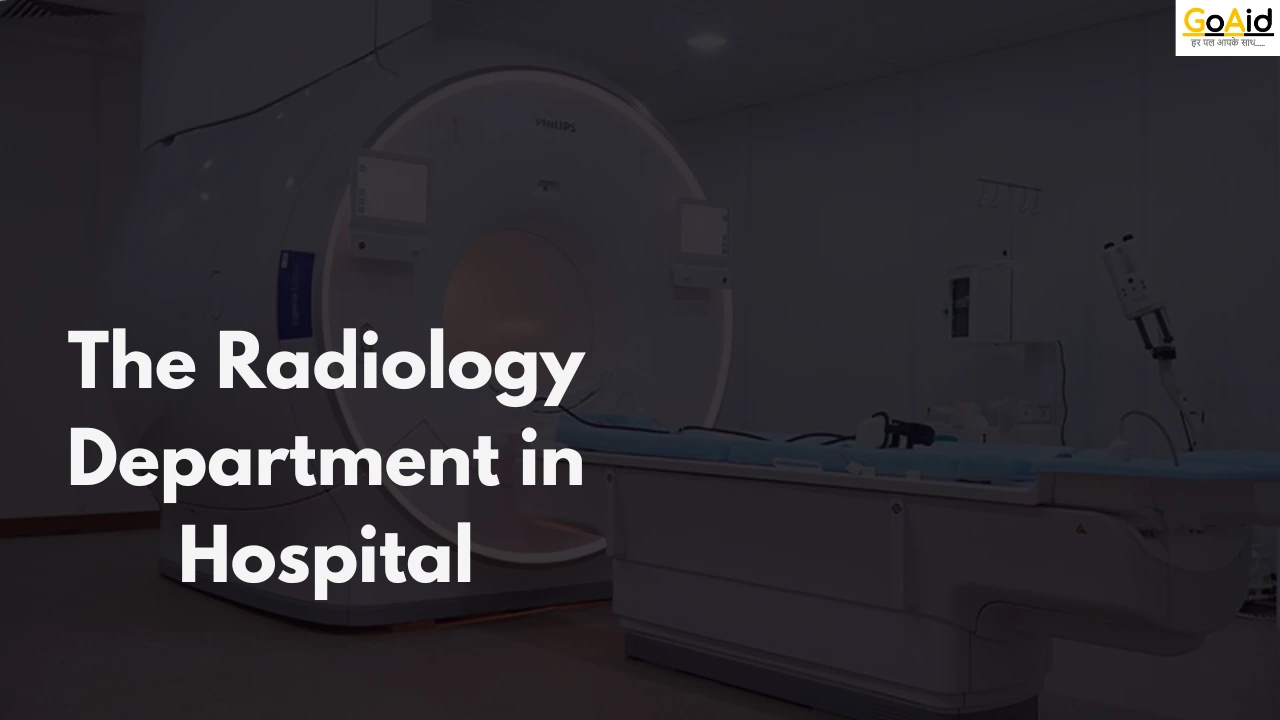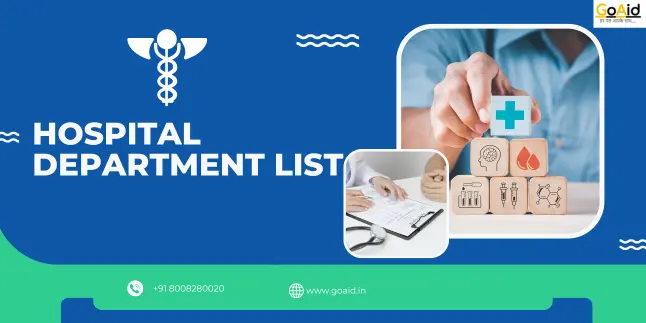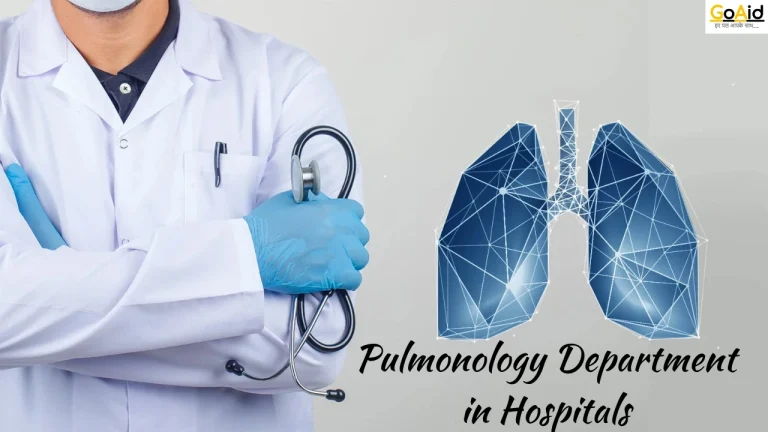In any kind of hospital that dedicatedly puts its efforts into solving medical emergencies related to Radiology, always has a separate Radiology Department in hospitals. If you have ever visited a hospital then you must have seen the Radiology Department in Hospital. But do you know what are the main jobs and responsibilities of the Radiology Department in Hospital?
If you donŌĆÖt, then no need to worry! However, you must know about some of the most popular hospital wards and departments in a hospital where the Radiology Department in Hospital is one of the most popular ones. This is why, in this blog, we have added comprehensive details about the Radiology Department in the Hospital. If you are also excited to know about the Radiology Department in Hospital then read this blog to the end.
So, letŌĆÖs start
What is the Radiology Department? ŌĆō Radiology Meaning
The Radiology Department in hospitals is responsible for using imaging technologies to diagnose and sometimes treat medical conditions. Radiology utilizes X-rays, MRIs, CT scans, and ultrasounds to create detailed images of the body’s internal structures, aiding in early detection and precise diagnosis.
In pediatric care, the Radiation Pediatrics department plays a crucial role in identifying conditions requiring specialized treatment. Hospitals rely on the Radiology Department for comprehensive diagnostics, with essential equipment like imaging machines enabling accurate assessments for various departments, including Pediatrics and Orthopedics.
Roles & Responsibilities of the Radiology Department
These are the key roles and responsibilities of the radiology department:
- Imaging Diagnostics: The Radiology department uses imaging technologies like X-rays, MRIs, CT scans, and ultrasounds to diagnose conditions. These non-invasive tools help visualize internal structures, allowing for accurate diagnosis and treatment planning.
- Radiation Therapy: For cancer patients, the department provides radiation therapy, using targeted radiation to destroy cancer cells. This treatment is a critical component of oncology care, often used in conjunction with chemotherapy or surgery.
- Interventional Radiology: The department performs minimally invasive procedures using imaging guidance, such as angiography or biopsies. These procedures help treat conditions without the need for open surgery, reducing recovery time.
- Pediatric Imaging: The Radiation Pediatrics department specializes in imaging services for children, ensuring low-dose radiation and child-friendly equipment to diagnose and monitor conditions like fractures or congenital abnormalities.
- Emergency Diagnostics: The Radiology department plays a crucial role in emergency settings, providing rapid imaging for trauma cases to assess internal injuries like fractures or bleeding, enabling timely intervention.
- Collaboration with Specialists: Radiologists work closely with other specialists, including oncologists, orthopedic surgeons, and pediatricians, providing essential imaging insights that guide treatment decisions.
- Monitoring Treatment Progress: Radiology is used to track the effectiveness of ongoing treatments, such as chemotherapy, by imaging tumors and other conditions to determine if the treatment is working.
- Minimizing Radiation Exposure: Ensuring patient safety by minimizing radiation exposure is a priority. The department uses advanced technologies and protocols to reduce the amount of radiation needed during imaging tests.
- Patient Education: Radiologists explain imaging results to patients, helping them understand their conditions and the next steps in their treatment plans. Clear communication is essential for informed decision-making.
- Equipment Maintenance: The department ensures that imaging equipment is well-maintained and calibrated, providing accurate and reliable results. Regular maintenance and updates are crucial for safe and effective diagnostics.
Features and Specialities of the Radiology Department
These are the key features and specialties of the radiology Department:
Features of the Radiology Department
- Advanced Imaging Technology: Utilizes cutting-edge technology like MRI, CT scans, and ultrasounds for accurate diagnosis.
- Non-Invasive Diagnostics: Provides non-invasive diagnostic tests for various conditions.
- Pediatric Radiology: Tailors imaging services to the needs of children with low-dose radiation.
- Interventional Radiology: Offers image-guided minimally invasive procedures for treating various conditions.
- Radiation Therapy: Specializes in using radiation to treat cancers and other conditions.
Specialties of Radiology Department
- Oncological Imaging: it provides detailed imaging to detect and monitor cancer.
- Cardiovascular Imaging: It specializes in imaging heart conditions for diagnosis and treatment planning.
- Musculoskeletal Imaging: It is expertise in diagnosing bone, joint, and muscle issues through imaging.
- Emergency Radiology: This is rapid imaging services for trauma and emergency cases.
- Prenatal Imaging: This offers detailed fetal imaging to monitor the health of the fetus during pregnancy.
Read More: Full Details about Neurology Department in Hospitals
What treatment is provided under the Radiology Department?
The Radiology department provides diagnostic and interventional treatments through advanced imaging technologies. It plays a crucial role in diagnosing conditions and offering image-guided therapies in conjunction with other departments like oncology and orthopedics.
- Diagnostic Imaging: This treatment Offers X-rays, CT scans, MRIs, and ultrasounds to diagnose conditions like fractures, tumors, and infections, aiding in accurate treatment planning.
- Radiation Therapy: This treatment provides radiation therapy for cancer patients, using targeted radiation to destroy cancerous cells while preserving surrounding healthy tissue.
- Interventional Radiology: This treatment performs minimally invasive procedures like angioplasty, biopsy, and stenting, using imaging guidance to treat conditions without open surgery.
- Pediatric Imaging: This treatment specializes in low-dose radiation imaging for children to diagnose conditions like fractures, infections, or congenital abnormalities with minimal risk.
- Emergency Imaging: This treatment provides rapid imaging services in emergencies to diagnose trauma-related conditions, such as internal bleeding or fractures, for immediate intervention.
- Monitoring Disease Progression: This treatment uses imaging to monitor the progress of ongoing treatments, such as chemotherapy, ensuring the treatment is effective.
- Prenatal Imaging: This treatment offers fetal ultrasounds to monitor the health of the developing baby during pregnancy, identifying potential complications early.
Also Read: The Orthopedics Department in Hospital
Essential Equipment used in the Radiology Department
These are the key essential equipment used in the Radiology department:
- MRI Machines: Uses powerful magnets and radio waves to produce detailed images of soft tissues, such as the brain, muscles, and ligaments.
- CT Scanners: Combines X-ray images to create cross-sectional views of internal organs and bones, useful in trauma and cancer diagnosis.
- Ultrasound Machines: Uses sound waves to produce images of internal organs, commonly used for prenatal imaging and abdominal exams.
- X-Ray Machines: Provides quick and accurate images of bones and chest organs, essential for diagnosing fractures and infections.
- Fluoroscopy Equipment: Offers real-time imaging of body structures, commonly used for guiding catheter placements and other procedures.
- Mammography Units: Specialized X-ray machines designed for breast tissue, used in breast cancer screenings.
- PET Scanners: Produces detailed images of metabolic processes within the body, often used for cancer and brain disorders.
- Radiation Therapy Machines: Delivers targeted radiation to treat cancers, while minimizing damage to surrounding healthy tissues.
Conclusion to the Radiology Department
In conclusion, we have thoroughly detailed the Radiology department in hospitals, explaining the meaning of Radiology and the features and specialties of the Radiology department. We also discussed the roles and responsibilities within the department, alongside the essential equipment used in Radiology for diagnostics and treatment. We hope this blog has provided all the information you need about the Radiology department. If you have any additional questions, feel free to ask them in the comment box.
Book Ambulance: GoAid Ambulance Service
FAQs related to the Radiology Department
The Radiology department focuses on diagnosing and treating diseases using imaging technologies like X-rays, MRIs, and CT scans.
An MRI scan uses magnetic fields and radio waves to create detailed images of internal organs, tissues, and the nervous system.
A CT scan combines X-ray images from different angles to create detailed cross-sectional views of the bodyŌĆÖs internal structures.
A radiologist interprets medical images to diagnose conditions and often works with doctors to plan treatments based on imaging results.
Interventional radiology involves minimally invasive procedures, such as biopsies and stent placements, guided by imaging techniques like ultrasounds and CT scans.
This equipment includes MRI machines, CT scanners, X-ray machines, and ultrasound devices, used for diagnostic and interventional purposes.
Radiation therapy uses high-energy radiation to target and destroy cancer cells while minimizing damage to surrounding healthy tissues.
A PET scan provides detailed images of metabolic processes in the body, often used to detect cancer or neurological disorders.
















